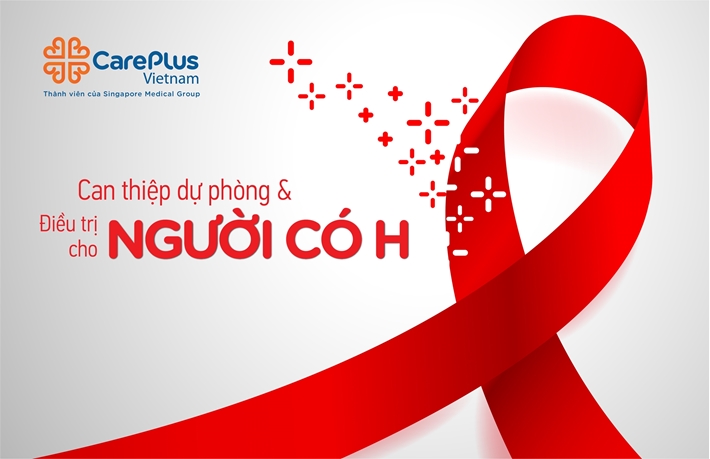Prevention and Treatment for People with H+

1/17/2018 9:46:58 AM
UNAIDS has released a new report showing that for the first time the scales have tipped: globally, more than half of all people living with HIV (53%) now have access to HIV treatment and AIDS-related deaths have almost halved in the past ten years. In 2016, 19.5 million people living with HIV had access to treatment, and AIDS-related deaths had fallen from 1.9 million in 2005 to 1 million in 2016. Provided that scale-up continues, this progress puts the world on track to reach the global Fast Track target on treatment by 2020.
Over the past 25 years, Viet Nam has rapidly scaled up HIV services and made significant progress in preventing new infections and reducing AIDS-related deaths.
- Estimated number of people living with HIV in Viet Nam: 250,000, HIV Prevalence (2011–2016); Percentage of adults in the general population who are living with HIV: 0,4%
- Number of adults and children currently receiving antiretroviral therapy: 116,000
- Percentage of eligible adults and children currently receiving antiretroviral therapy: 47%
- Percentage of people who inject drugs that have received an HIV test in the past 12 months and know their results: 29% (2011), 33% (2012), 23% (2013), 28% (2014)
What is HIV/AIDS? How is it transmitted?
The human immunodeficiency virus (HIV) infects cells of the immune system, destroying or impairing their function. As the infection progresses, the immune system becomes weaker, and the person becomes more susceptible to infections. The most advanced stage of HIV infection is acquired immunodeficiency syndrome (AIDS). It can take 10 to 15 years for an HIV-infected person to develop AIDS, and antiretroviral drugs can slow the process even further.
HIV is transmitted through unprotected sexual intercourse (anal or vaginal), transfusion of contaminated blood, sharing of contaminated needles, and between a mother and her infant during pregnancy, childbirth and breastfeeding.
Where can I get HIV counseling and testing?
Depending on where most convenient, you can come to one of the following venues for voluntary HIV counselling and testing:
- Bệnh viện Bệnh nhiệt đới trung ương, Hà Nội (National Institute for Hygene and Epidemiology, Ha Noi)
- Bệnh viện Bệnh nhiệt đới tp. Hồ Chí Minh (Nhiet Doi Hospital, Ho Chi Minh City)
- Viện Pasteur tp. Hồ Chí Minh (Pasteur Institute, Ho Chi Minh City)
- Viện Vệ sinh Dịch tễ khu vực Tây Nguyên, Đắc Lắc (The Central Highland Branch of the National Institute for Hygene and Epidemiology, Dak Lak City)
- Viện Pasteur Nha Trang (Pasteur Institute, Nha Trang City)
- Trung tâm y tế dự phòng ở 63 tỉnh, thành phố (Provincial Preventive Medicines Centres)
- Khoa huyết học ở bệnh viện đa khoa các tỉnh, thành phố trực thuộc trung ương (Hematology Department at Provincial General Hospitals)
- Bệnh viện da liễu (Dermatology hospitals)
You can refer to this list for more options on free HIV counselling and testing points of service in Ha Noi and Ho Chi Minh City.
You have the rights to request that the HIV counselling and testing for you strictly follow the principles of Consent; Confidential; Counseling; Accuracy; and, Linkage to care and treatment.
- Consent: It requires consent of the client after being adequately informed of HIV testing. The client has the right to refuse testing.
- Confidential: To ensure the confidentiality of information of the person who gets HIV counseling and testing. Contents of discussion between the counselor and the client will not be disclosed to anyone without his/her consent.
- Counseling: All HIV testing cases must be provided with pre-test information and post-test counseling.
- Accuracy: Check if the clinic where you are using service applies the national HIV testing algorithm.
- Linkage to care and treatment: HIV-infected people should be linked immediately to care and treatment services.
Information on post-exposure prophylaxis
Go to the Infectious Diseases Department at your local Provincial Hospital immediately and ask about post-exposure prophylaxis, or PEP. If it’s been less than 72 hours since your incident happened, you may be able to take medication that could keep you from getting infected with HIV, even if the needle is HIV infected and your partner is HIV-positive. If it’s been longer than 72 hours, PEP will not protect you from HIV, and you will need to explore HIV testing options. In most cases, you will have to wait at least 2 weeks after a possible exposure before an HIV test can provide accurate results.
If the incident is not a post-occupational HIV exposure or one of the regulated non-occupational post-exposure situations, the person in question may be not considered for prophylaxis. In such cases, there is PEP at some private clinics if the person can afford.
Information on how and where to get treatment for HIV
According to Decision No.3047/2015 of the Ministry of Health on guidelines for the management, care and treatment of people living with HIV, adults and children of more than five years of age can be enrolled in antiretroviral treatment when their CD4 count < 500 cells/mm3or upon testing positive for HIV irrespective of CD4 count in cases of:
- Clinical stage 3 or 4 including tuberculosis;
- Findings of severe chronic hepatitis Ba;
- Pregnant women and lactating women with HIV;
- People with HIV whose spouse is not infected with HIV;
- People living with HIV from key populations including: people who inject drugs, sex workers, and men who have sex with men;
- People living with HIV ≥ 50 years of age;
- People living with HIV who live and work in mountainous, islands and remote areas.
In case you test positive for HIV, the clinic where you do your test is responsible to refer you immediately to care and treatment services. A feedback mechanism will also be used to ensure your successful referral and that the referral process is documented in your medical record.